Diacrisia sannio
(Linneaus, 1758)
-
 Subfamily: Arctiinae, Arctiini, Arctiina
Subfamily: Arctiinae, Arctiini, Arctiina -
 Wingspan: 35-48 mm
Wingspan: 35-48 mm -
 Flight period: May - Aug
Flight period: May - Aug -
 Spread: Common
Spread: Common -
 Host plants: Polyphagous
Host plants: Polyphagous
Information
The Diacrisia sannio is a moth of the Erebidae family, subfamily Arctiinae, with a wingspan of 35-48 mm.
In Europe it is visible practically everywhere, it is absent like almost all the species in this site, from Iceland.
In Italy it is also present in Sicily but not in Sardinia. *
It has a remarkable sexual dimorphism, the males have front wings ranging from lemon yellow to pale ivory, with a pink border.
A pink and black stigmata is present in the median area.
The hind wings are white, with a pink border and a sub marginal area, of variable thickness, of black color.
Here too there is a black stigmata in the median area.
The female is brown in color, with darker veins and stigmata in the median area.
The hind wings of the Diacrisia sannio range from pale brown to orange yellow in females, pale yellow in males, with basal, sub marginal and stigmata in the median area, black,
sometimes almost to cover the entire wing (only in females).
In the males the antennae are pale red / pink, yellow head and thorax with thick hair, pale yellow abdomen.
In females, the antennae, head, thorax and abdomen have a color ranging from dark yellow to brown.
It is a univoltine species with adults visible from May to mid-July, occasionally a second partial generation occurs around August.
The larva is dark brown in color, with red hairs, a slight red or white backline with orange spots.
The chrysalis is brown with reddish hues. **
The larvae are polyphagous, they feed on Asteraceae, such as Cirsium, Hieracium, Leontodon and Taraxacum officinalis (common dandelion), Betulaceae such as Alnus (alder),
Ericaceae, like Calluna vulgaris (heather), Fabaceae like Trifolium (Clover), Plantaginaceae like Plantago sp., Polygonaceae like Polygonum sp., Rubiaceae like Galium sp.
Salicaceae, such as Salix, and Urticaceae such as Urtica dioica (Nettle).
* Lepidoptera mundi https://lepidoptera.eu/ - Fauna Europea https://fauna-eu.org/
** Bestimmungshilfe für die in Europa nachgewiesenen Schmetterlingsarten - http://lepiforum.de/
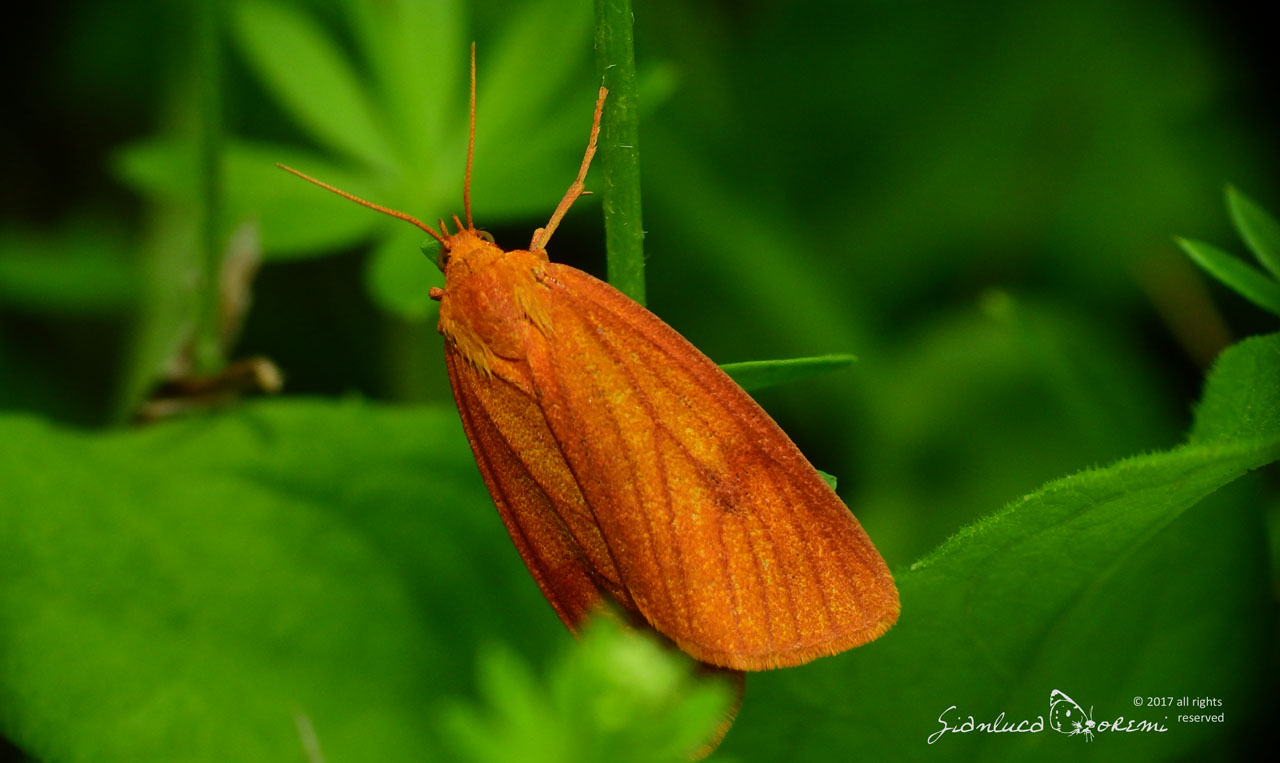
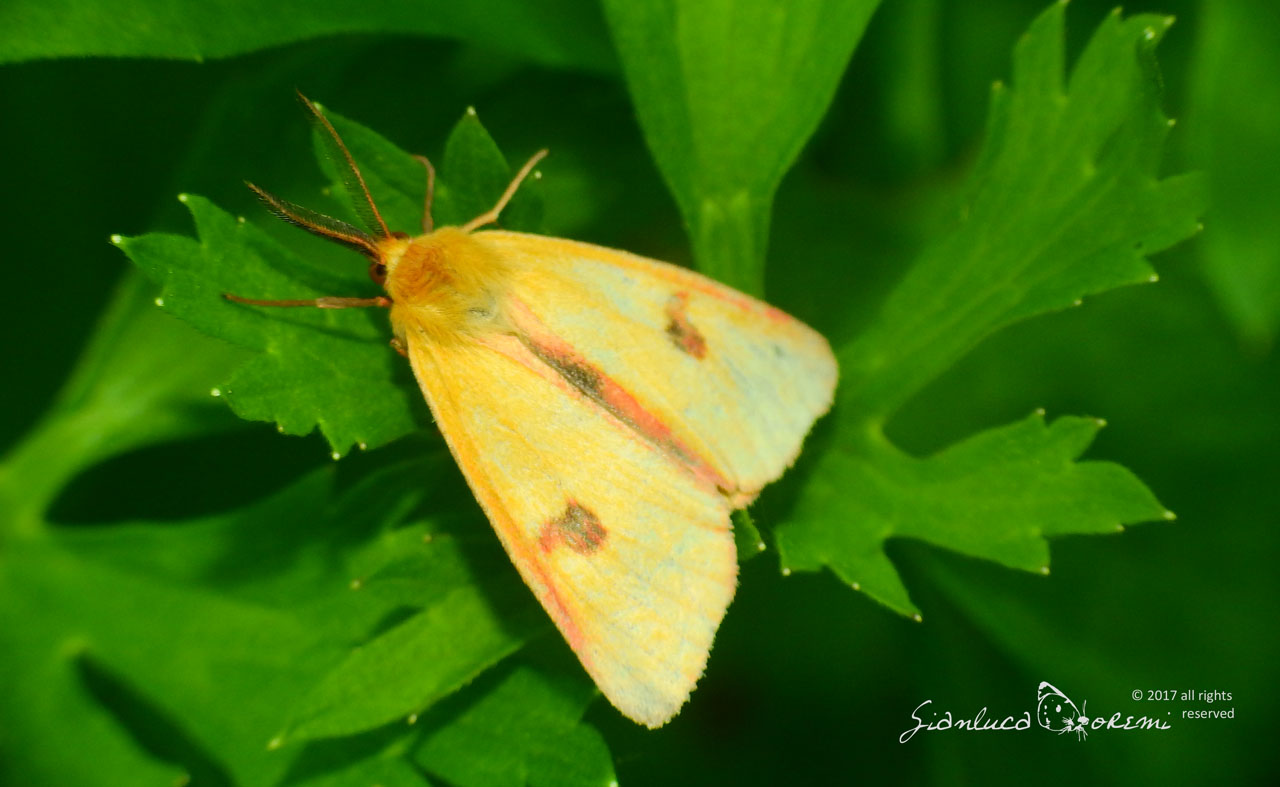
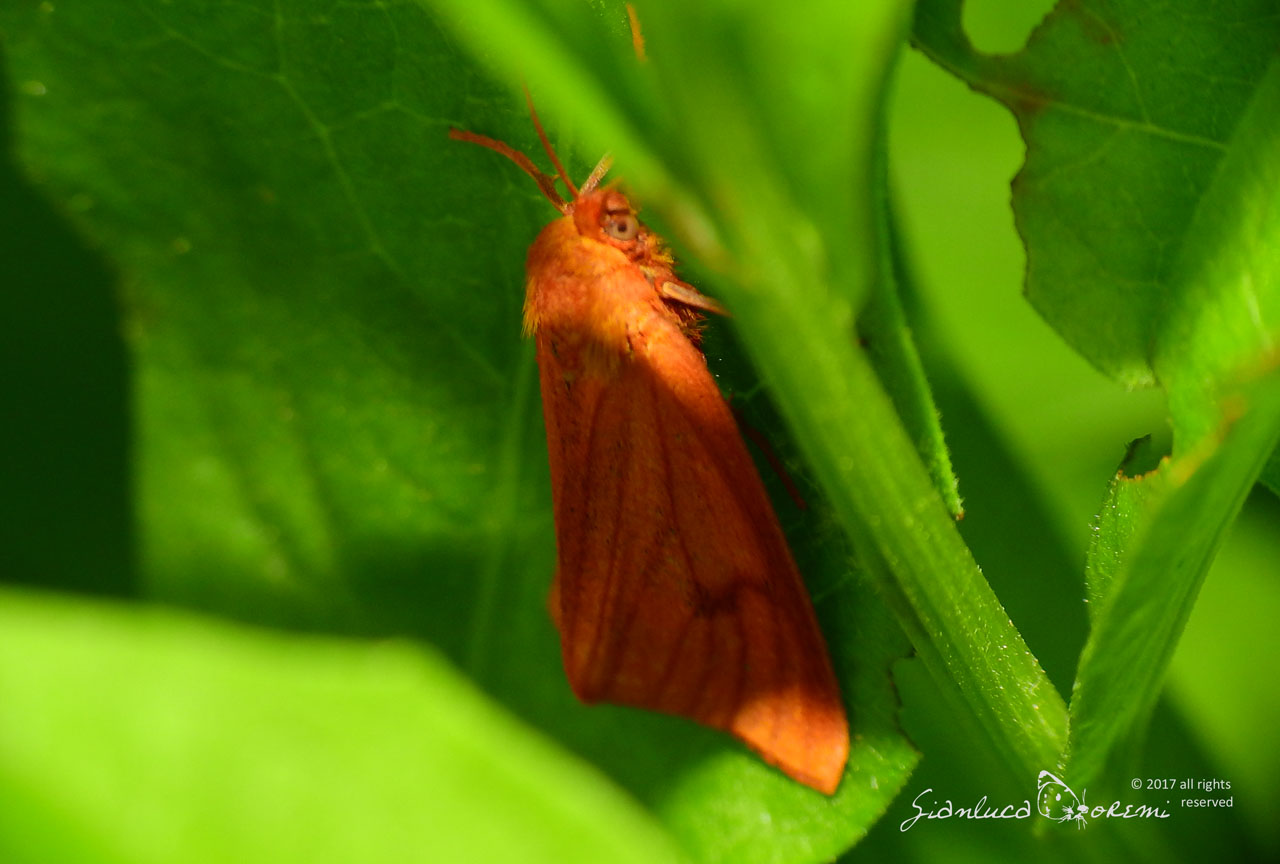
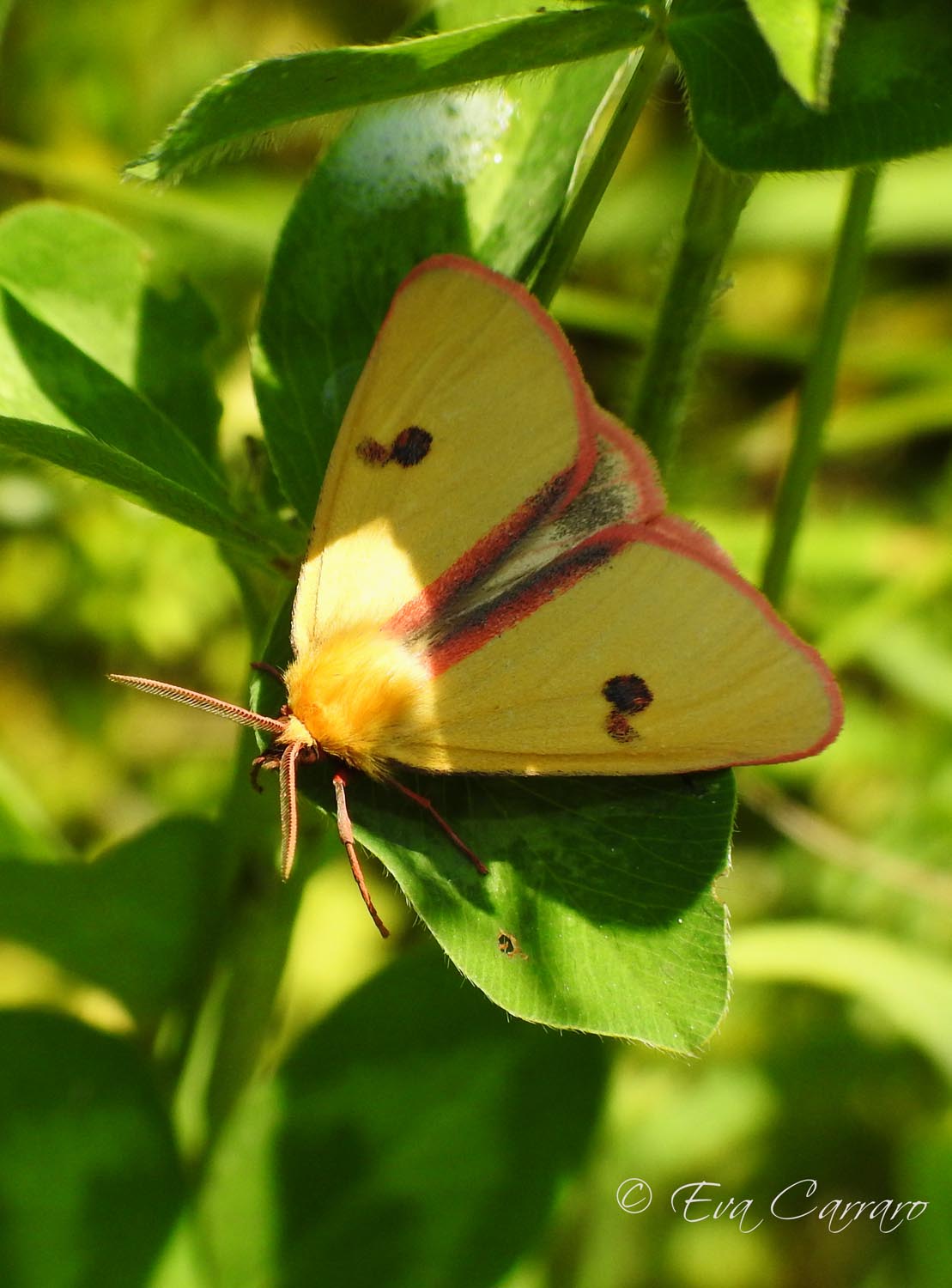


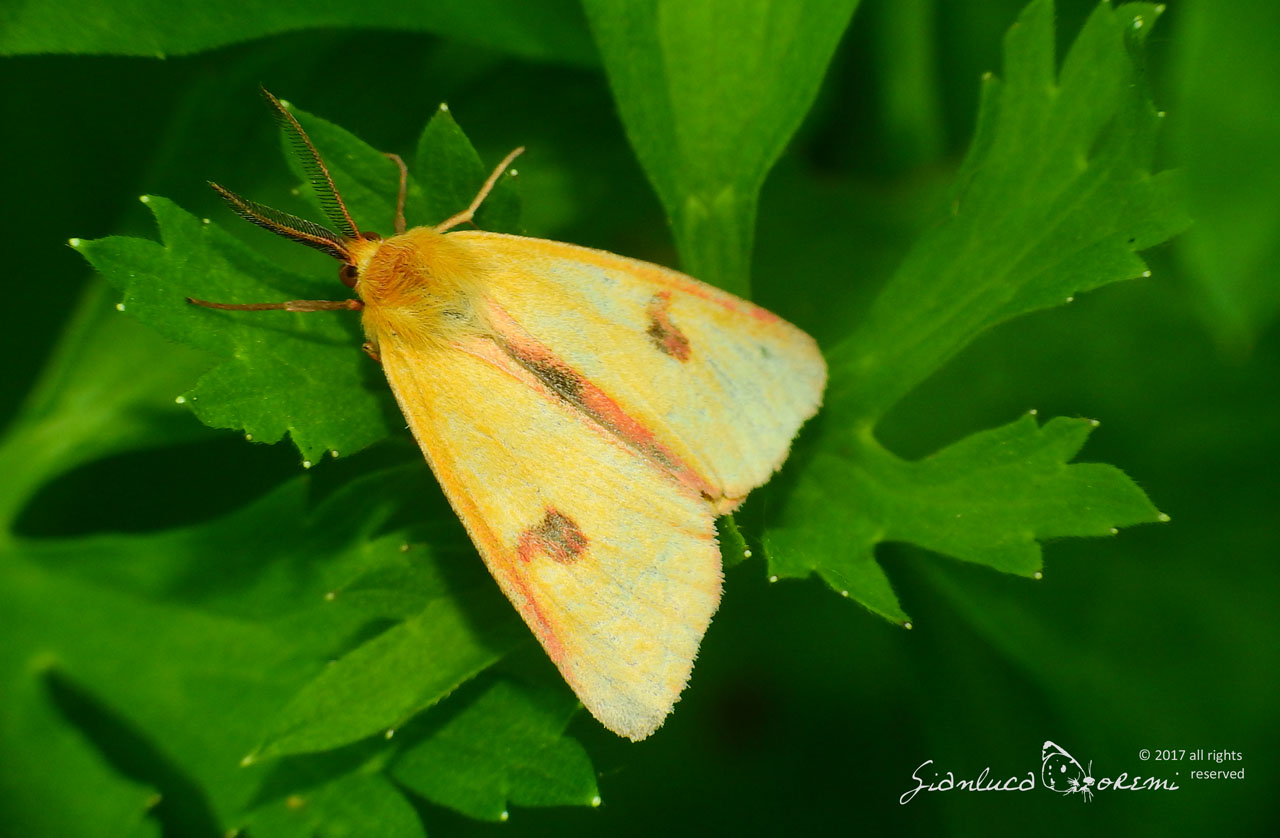
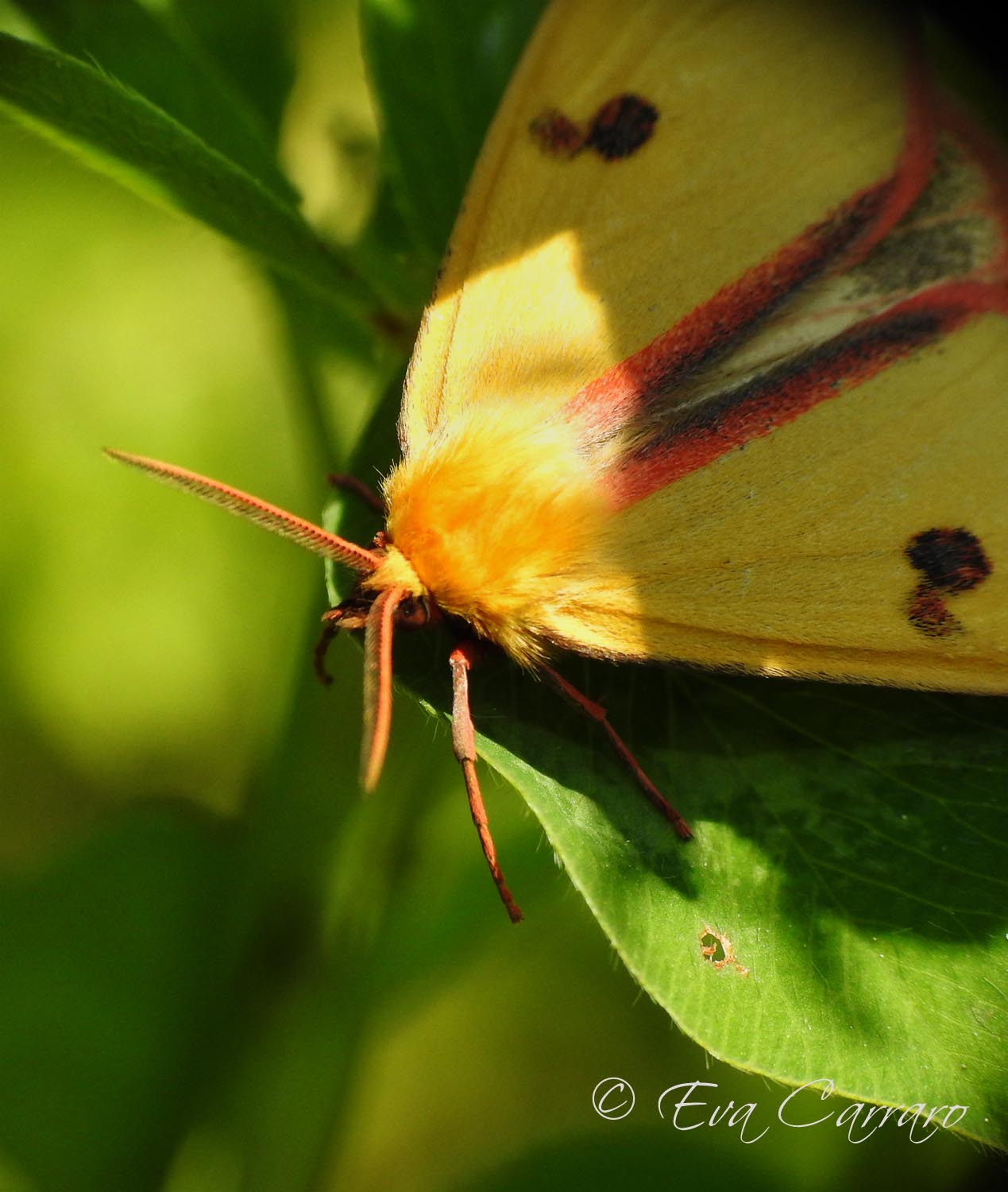
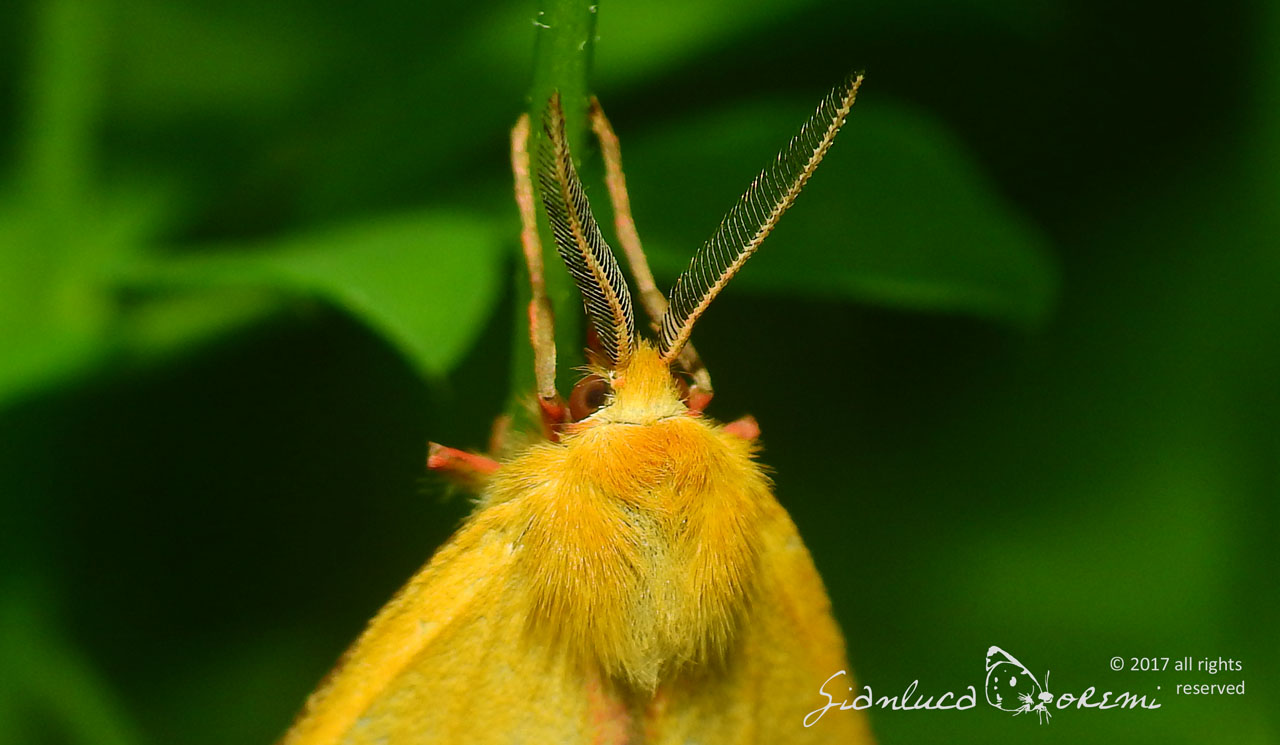
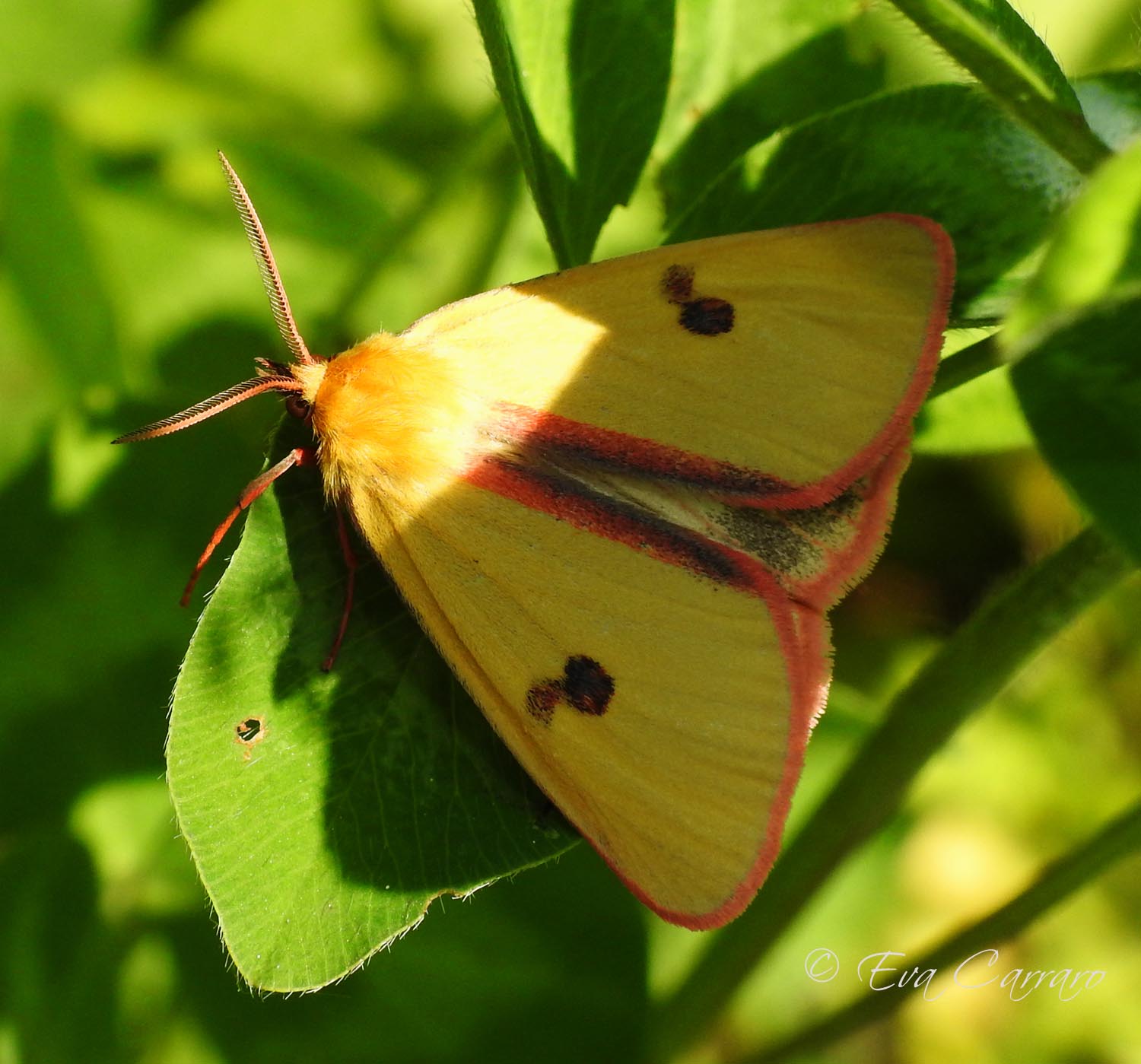
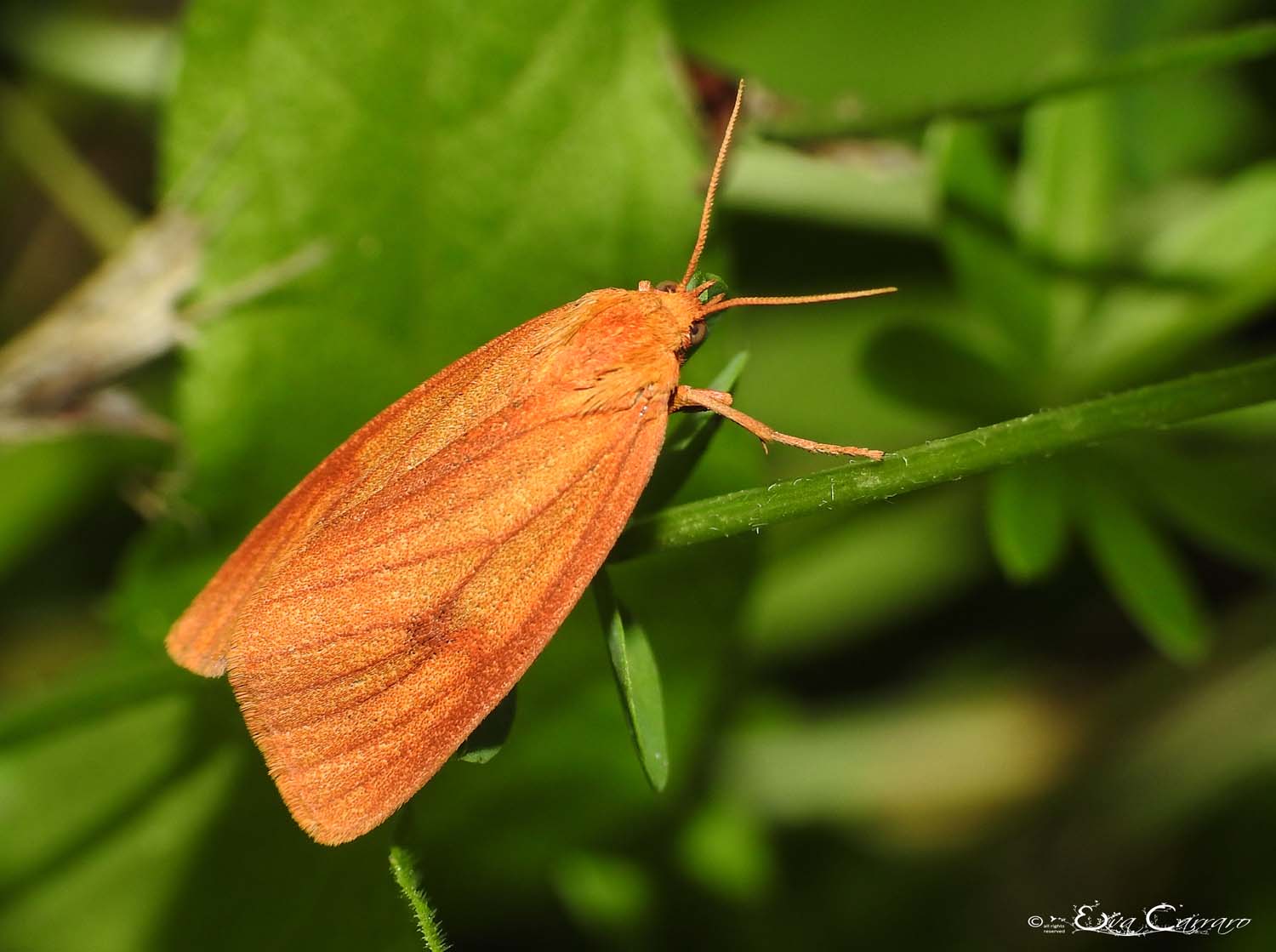
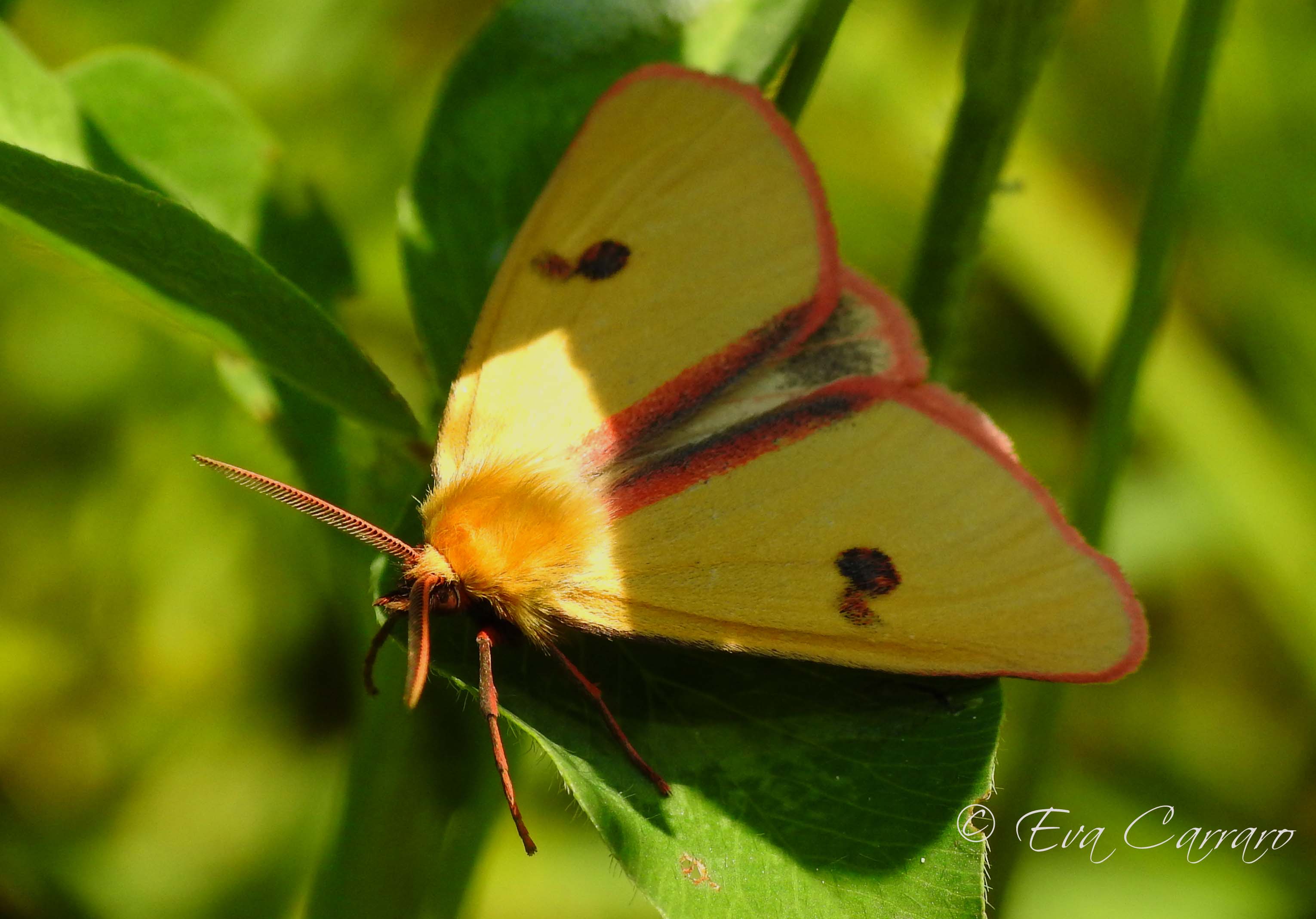
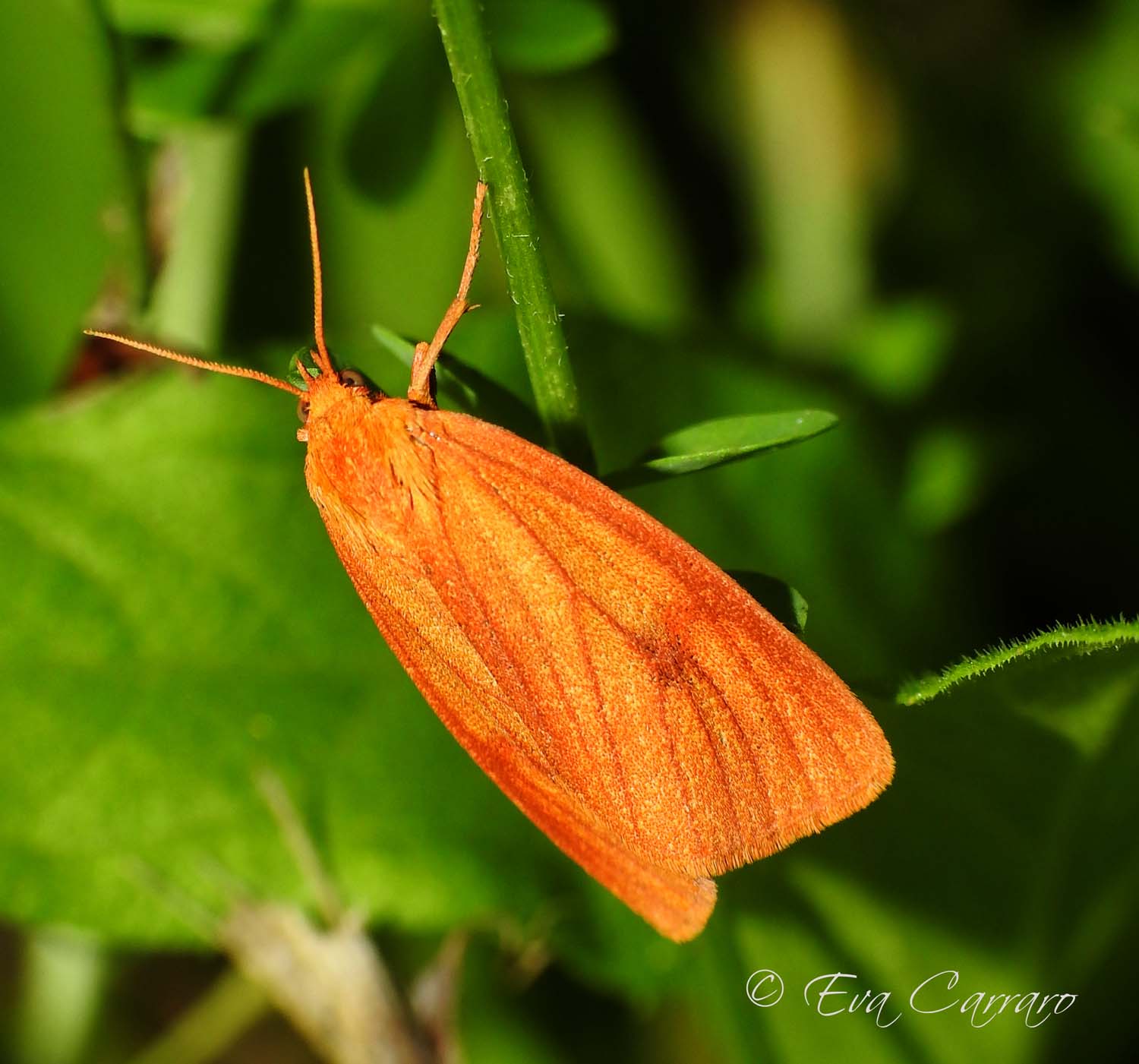
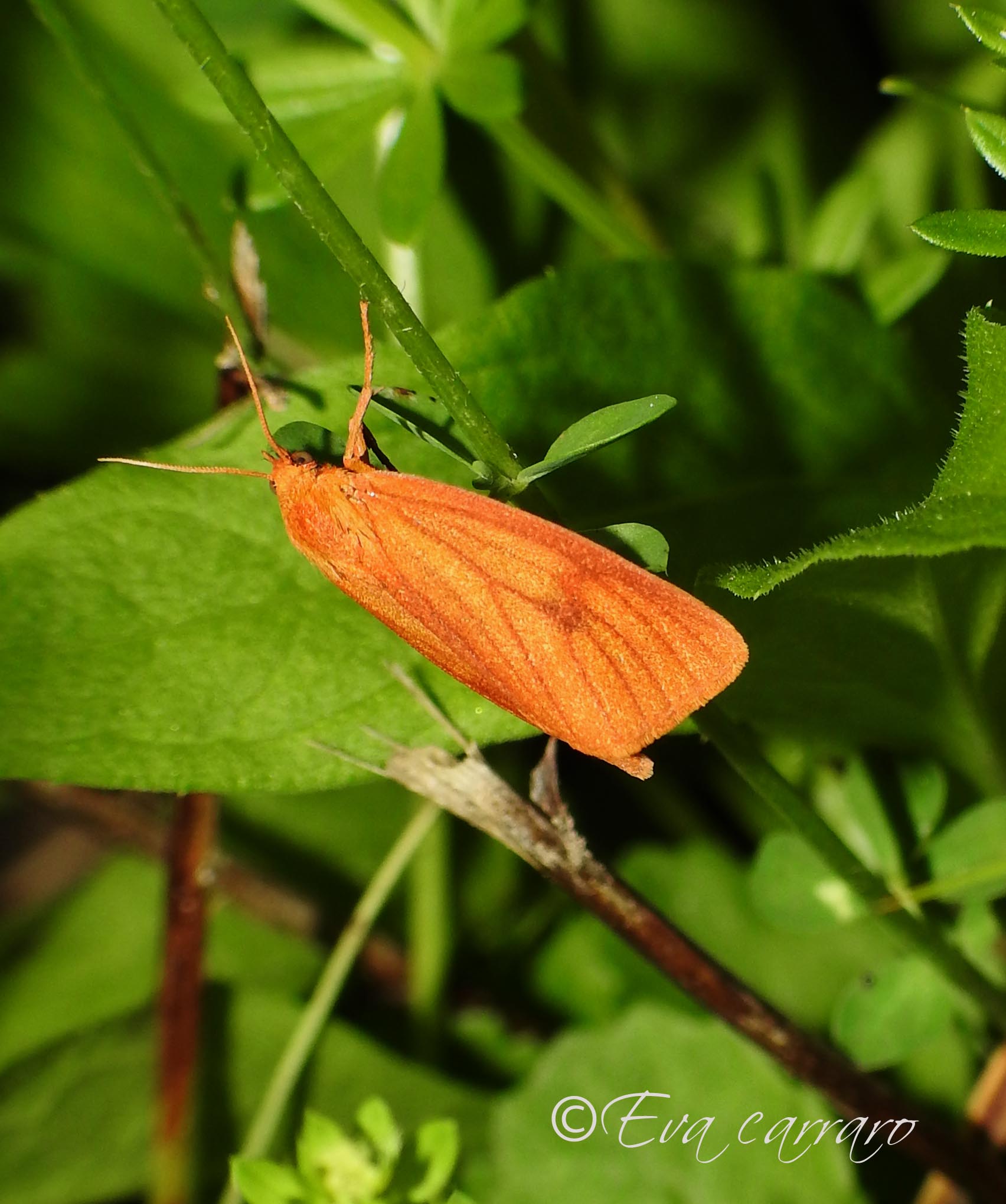
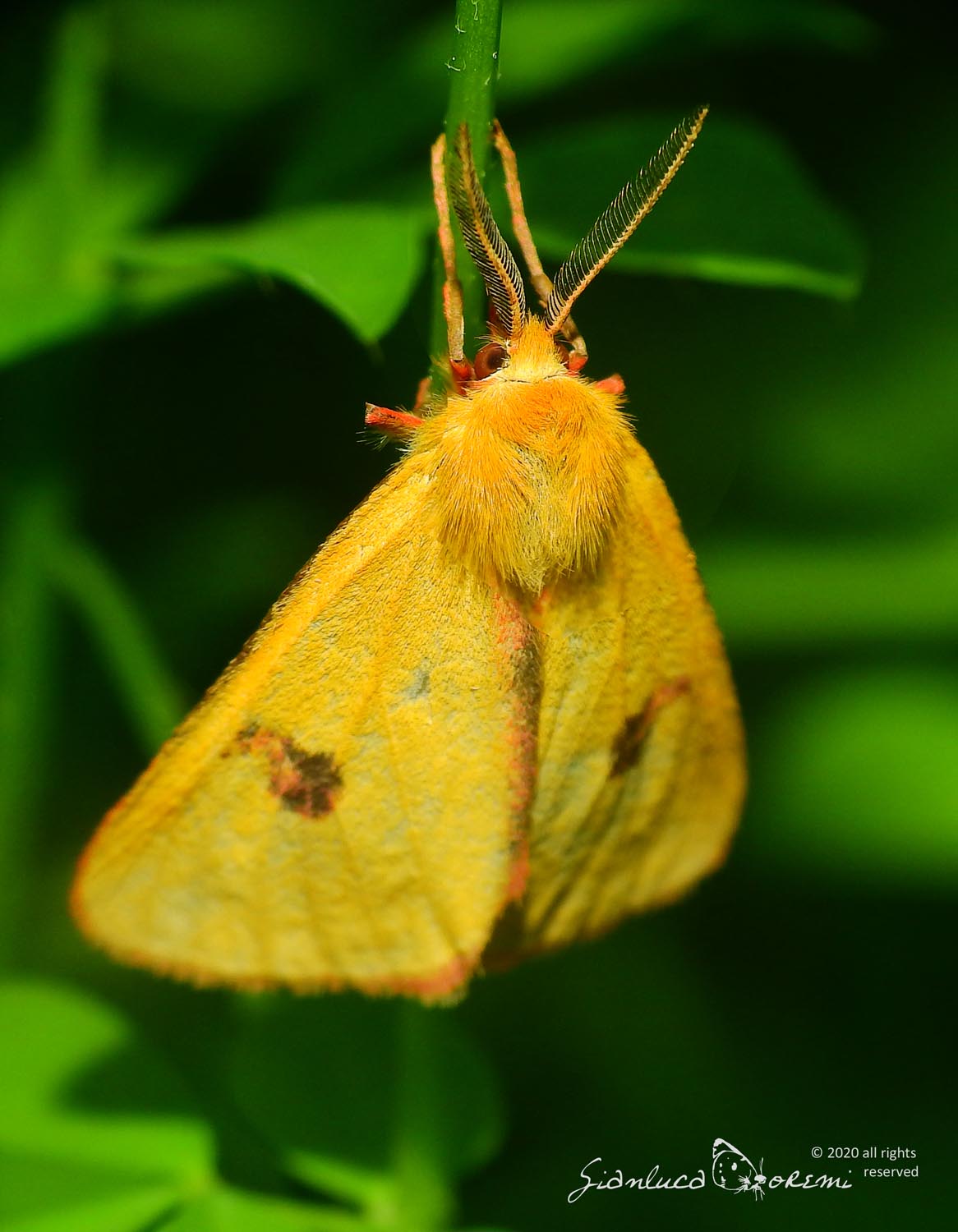
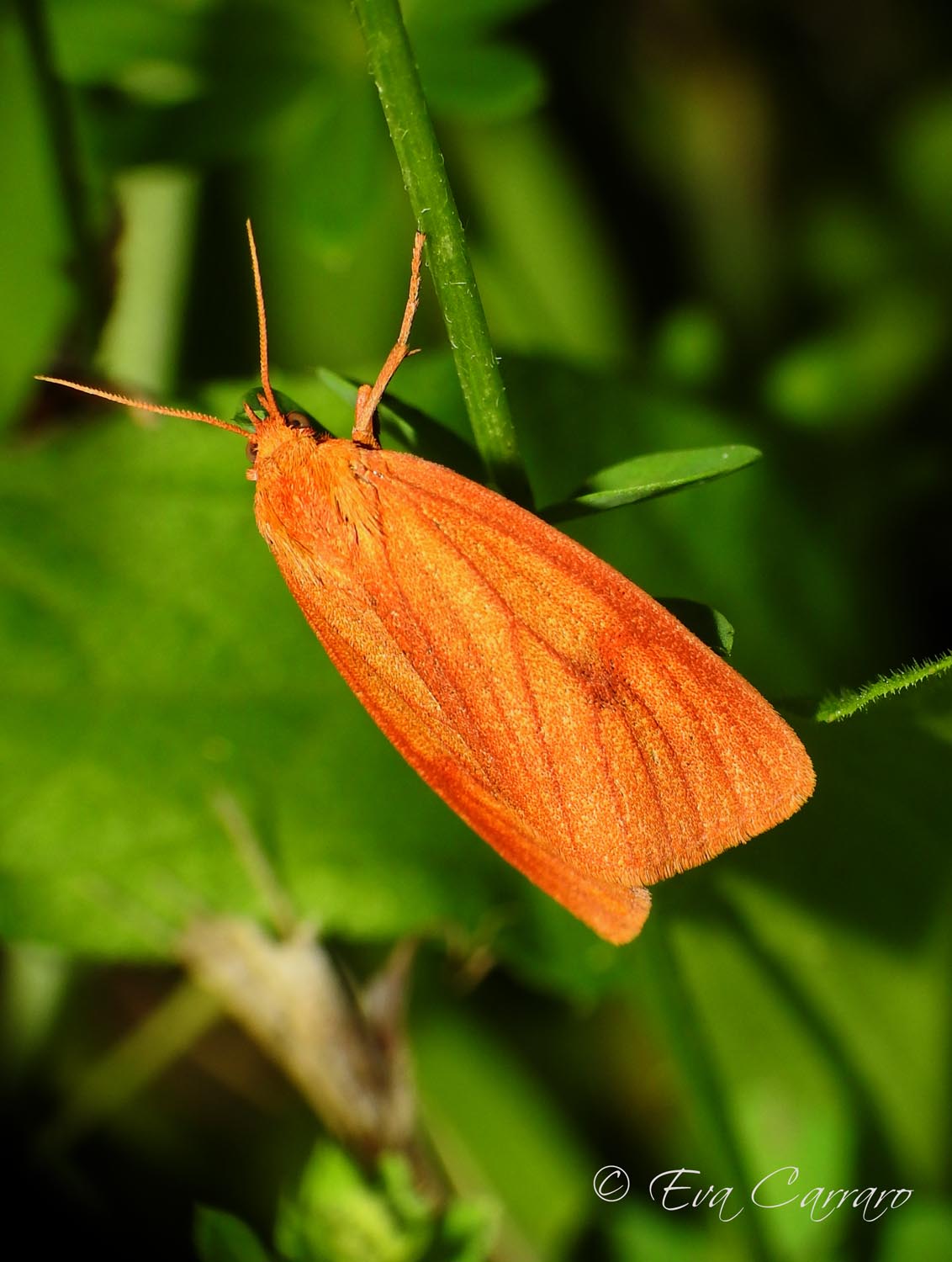


 EN
EN ITA
ITA
Social and publications